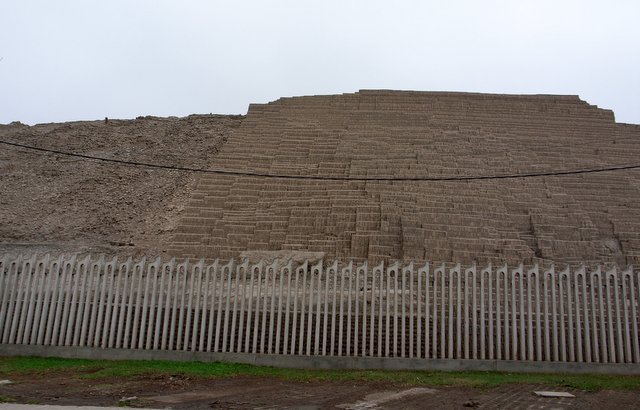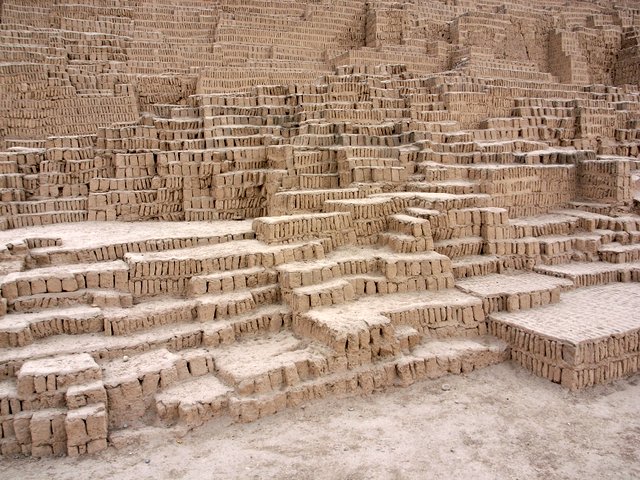
General view of Huaca Huallamarca
The city of Lima was founded by the Spanish on the site of an existing Inca and pre-Inca settlement, and some mud-brick ruins remain, somewhat incongruously squeezed in between residential buildings in the suburbs of Miraflores and San Isidro. Knowing I was interested in such things, my driver had taken me past one of the temple platforms on my way to the airport on Christmas Eve. And on the morning of my final day in Peru I was taken to the other main site, Huaca Huallamarca, which was only a 10 minute drive from my hotel.
My guide hadn’t been there recently (it’s not on the main tourist itinerary) and hadn’t checked the opening times. So we got there too early and had to wait 20 minutes or so before the gates were unlocked and we were let in. I took the photo above from outside the fence while we were waiting. You can clearly see the difference between the unexcavated part of the temple platform to the left, and the excavated and restored part on the right. Until 1945, this wasn’t even recognised as an archaeological site – the locals thought it was just a natural mound. Then the suburb of San Isidro was being developed, and a road was built right through the hill – at which point, rather too late, it was recognised as a pre-Inca site, dating from the 3rd century AD right through to the 15th century.

A close-up of the mud-brick construction
What I found particularly interesting was the way it was possible to get a clear view of the “bookshelf” style of assembly of the millions of mud-bricks. Apparently, this was an anti-seismic measure – in the event of an earthquake (which happens all too often in Peru), the spaces between the mud-bricks offer some flexibility to the structure, allowing it to absorb the vibrations rather than collapsing. It really made me realise just how much work must have gone into constructing the pyramids in the first place…..
